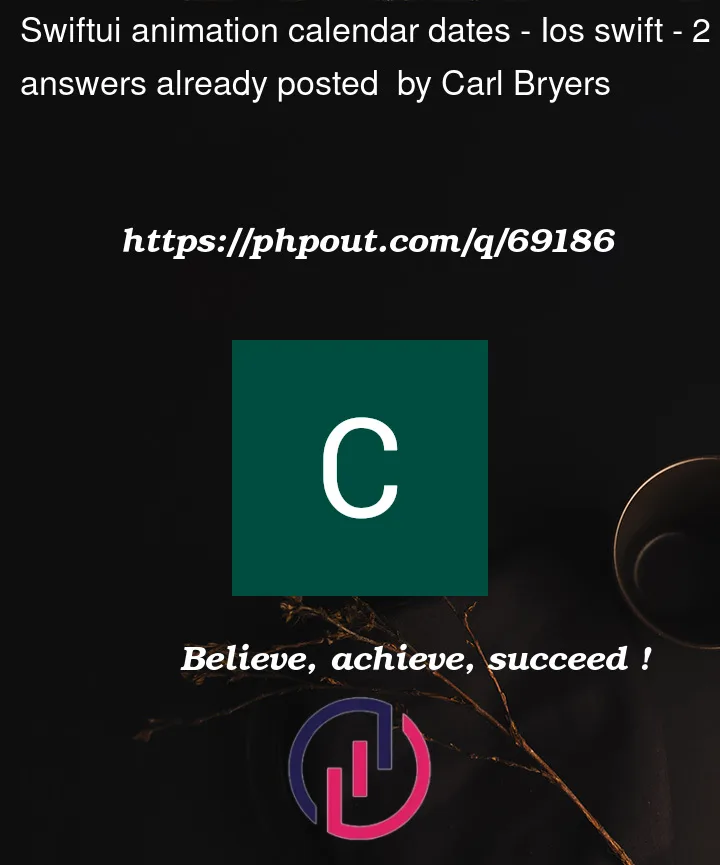In my app I want to show the passage of time by having a "calendar" transition from one date to the next, to the next, to the next, etc. So, for example, if I want to show the date transitioning from the 18th, to the 19th, to the 20th, I will show 18 for 1 second, then fade that out, fade in 19, fade that out, then fade in 20.
I have the following to show one date animating to the next (e.g. 18 > 19th):
struct Calendar: View {
@State var date: String
var body: some View {
VStack {
Spacer()
ZStack {
RoundedRectangle(cornerRadius: 20)
.stroke(Color.black, lineWidth: 2)
.frame(width: 200, height: 200)
RoundedRectangle(cornerRadius: 20)
.fill(Color.red)
.frame(width: 200, height: 200)
.offset(y: 160)
.clipped()
.offset(y: -160)
RoundedRectangle(cornerRadius: 20)
.stroke(Color.black, lineWidth: 2)
.frame(width: 200, height: 200)
.offset(y: 160)
.clipped()
.offset(y: -160)
Text(date).font(.system(size: 70.0))
.offset(y: 20)
}
Spacer()
Spacer()
}.padding()
}
}
and I call this in my code using:
ScrollView(showsIndicators: false) {
VStack {
Spacer()
ZStack {
if showseconddate == false {
Calendar(date: "18").animation(.easeInOut(duration: 1.0))
.transition(.opacity)
}
if showseconddate == true {
Calendar(date: "19").animation(.easeInOut(duration: 1.0))
.transition(.opacity)
}
Spacer()
}
}.onAppear {
Timer.scheduledTimer(withTimeInterval: 1, repeats: true) { timer in
withAnimation(Animation.linear(duration: 0.5)) {
self.showseconddate.toggle()
self.showfirstdate.toggle() }
timer.invalidate()
}
}
}
This all works as intended, but I’m struggling to then expand this to a case where I want to show it transitioning through multiple dates, such as 18 > 19 >20 >21 etc. Does anyone know how to expand this, or to use an alternative solution? Any solution must fade out the old date, then fade in the new date. Many thanks!




2
Answers
Here’s a relatively compact solution. Instead of relying on
Boolvalues, it cycles through an array:I had reworked your code to get the animations running, I felt it was a bit annoying to watch the entire calendar flash, so I reworked it into a
CalendarPage(I renamed Calendar to CalendarPage because Calendar is a Type in Swift) andCalendarViewthat takes the date and overlays it on the page.CalendarPage is your Calendar with the
datevar andText()removed:CalendarView uses the timer to increment your dates until you reach the
endDate, and it only effects the opacity of the date itself, not the whole calendar:I also used a preference key to compute the height of the
CalendarPage(though I could have hard coded it) using thisViewextension from FiveStars blog